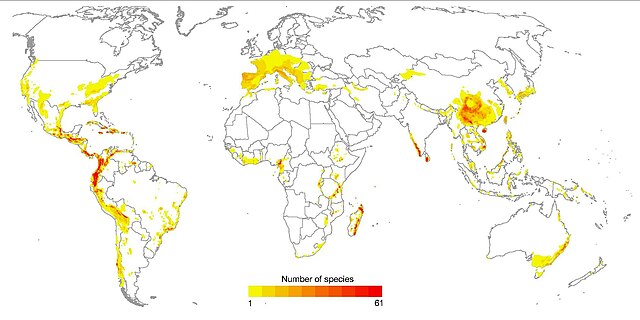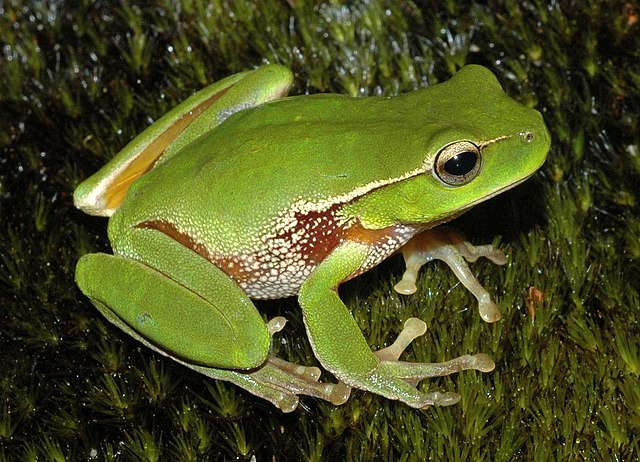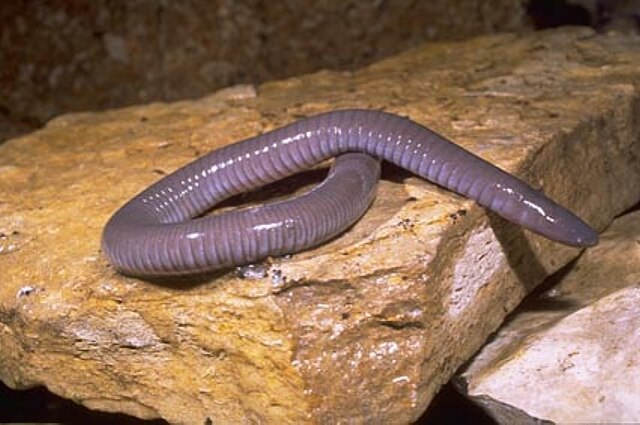Decline in amphibian populations
Since the 1980s, decreases in amphibian populations, including population decline and localized mass extinctions, have been observed in locations all over the world. This type of biodiversity loss is known as one of the most critical threats to global biodiversity. The possible causes include habitat destruction and modification, diseases, exploitation, pollution, pesticide use, introduced species, and ultraviolet-B radiation (UV-B). However, many of the causes of amphibian declines are still poorly understood, and the topic is currently a subject of ongoing research.
The Golden toad of Monteverde, Costa Rica, was among the first casualties of amphibian declines. Formerly abundant, it was last seen in 1989.
The distribution of 2,873 globally threatened amphibian species.
Trematode cyst-infected Pacific Tree Frog (Hyla regilla) with supernumerary limbs, from La Pine, Deschutes County, Oregon, 1998–9. This 'category I' deformity (polymelia) is believed to be caused by the trematode cyst infection. The cartilage is stained blue and calcified bones in red.
An adult male Ecnomiohyla rabborum in the Atlanta Botanical Garden, a species ravaged by Batrachochytrium dendrobatidis in its native habitat. It was the last known surviving member of its species, and with its death on Sept 28, 2016, the species is believed to be extinct.
Amphibians are ectothermic, anamniotic, four-limbed vertebrate animals that constitute the class Amphibia. In its broadest sense, it is a paraphyletic group encompassing all tetrapods, excluding the amniotes. All extant (living) amphibians belong to the monophyletic subclass Lissamphibia, with three living orders: Anura (frogs), Urodela (salamanders), and Gymnophiona (caecilians). Evolved to be mostly semiaquatic, amphibians have adapted to inhabit a wide variety of habitats, with most species living in freshwater, wetland or terrestrial ecosystems. Their life cycle typically starts out as aquatic larvae with gills known as tadpoles, but some species have developed behavioural adaptations to bypass this.
Image: Litoria phyllochroa
Image: Buettneria AMNH
Image: Notophthalmus viridescens PCCA20040816 3983A
Image: Dermophis mexicanus








